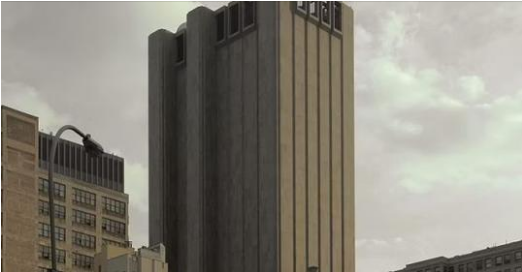In the heart of Lower Manhattan, a peculiar 29-story skyscraper has long fascinated New Yorkers. The building, known as 33 Thomas Street, stands out for its striking appearance – it has no windows. Despite its enigmatic presence, this structure holds a captivating history that intertwines telecommunications and modern surveillance.
Built in 1974, 33 Thomas Street was designed as a fortified communication hub, capable of withstanding atomic blasts. The architectural firm behind the project, John Carl Warnecke & Associates, created a 550-foot tower made of concrete and granite. Unlike neighboring buildings, this skyscraper remains unilluminated, casting a giant shadow by day and taking on an eerie aura at night.
The building’s mysterious presence has earned it the nickname “Long Lines Building,” capturing the imagination of locals as one of the city’s most iconic skyscrapers. However, the true purpose behind this enigma remained hidden until recently. Leaked documents, architectural plans, and interviews with former AT&T employees have revealed that 33 Thomas Street served as an NSA surveillance site codenamed Titanpointe.
Inside the building lies a significant international gateway switch, responsible for routing phone calls between the United States and countries worldwide. The NSA is believed to have tapped into these calls from a secure facility within the AT&T building. This covert surveillance program targeted international organizations, countries, and even U.S. allies.
The NSA’s presence within this iconic skyscraper raises fundamental questions about the boundaries of surveillance in our modern world. As experts point out, the integration of NSA equipment into AT&T’s network highlights the methods and technology employed by the agency to access communications data. This challenges the notion that such surveillance can be neatly confined to non-American targets.
The close relationship between AT&T and the NSA has been extensively documented. However, the extent of government surveillance within 33 Thomas Street remains unclear. This ambiguity raises important questions about the balance between privacy and security in our interconnected world.
In conclusion, 33 Thomas Street stands as a symbol of the complex interplay between privacy and security. Within its concrete walls, it holds the history of telecommunications and the mysteries of modern surveillance. As we continue to navigate the challenges of our ever-connected world, the secrets of this enigmatic skyscraper serve as a reminder of the delicate balance between our right to privacy and the need for national security.


